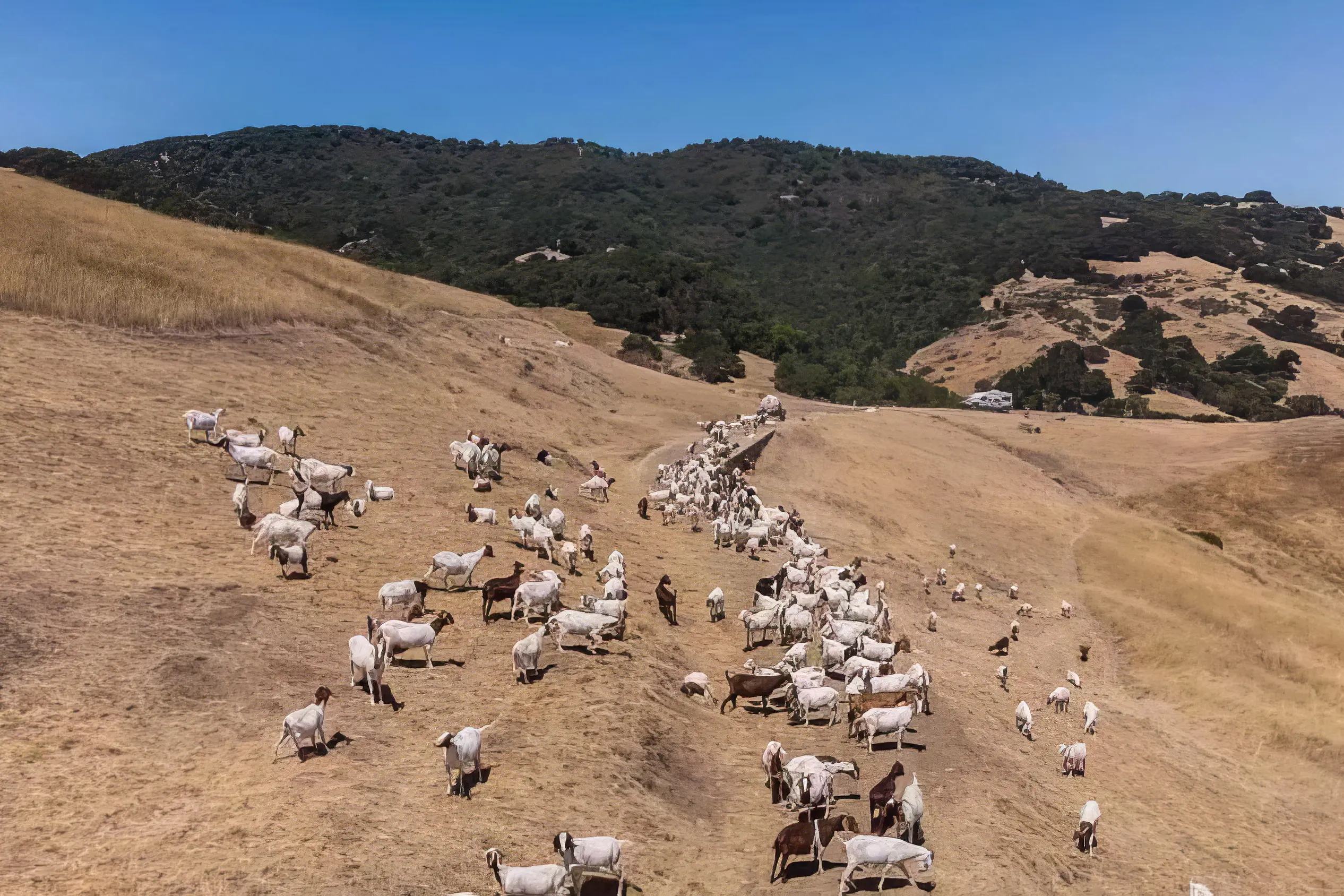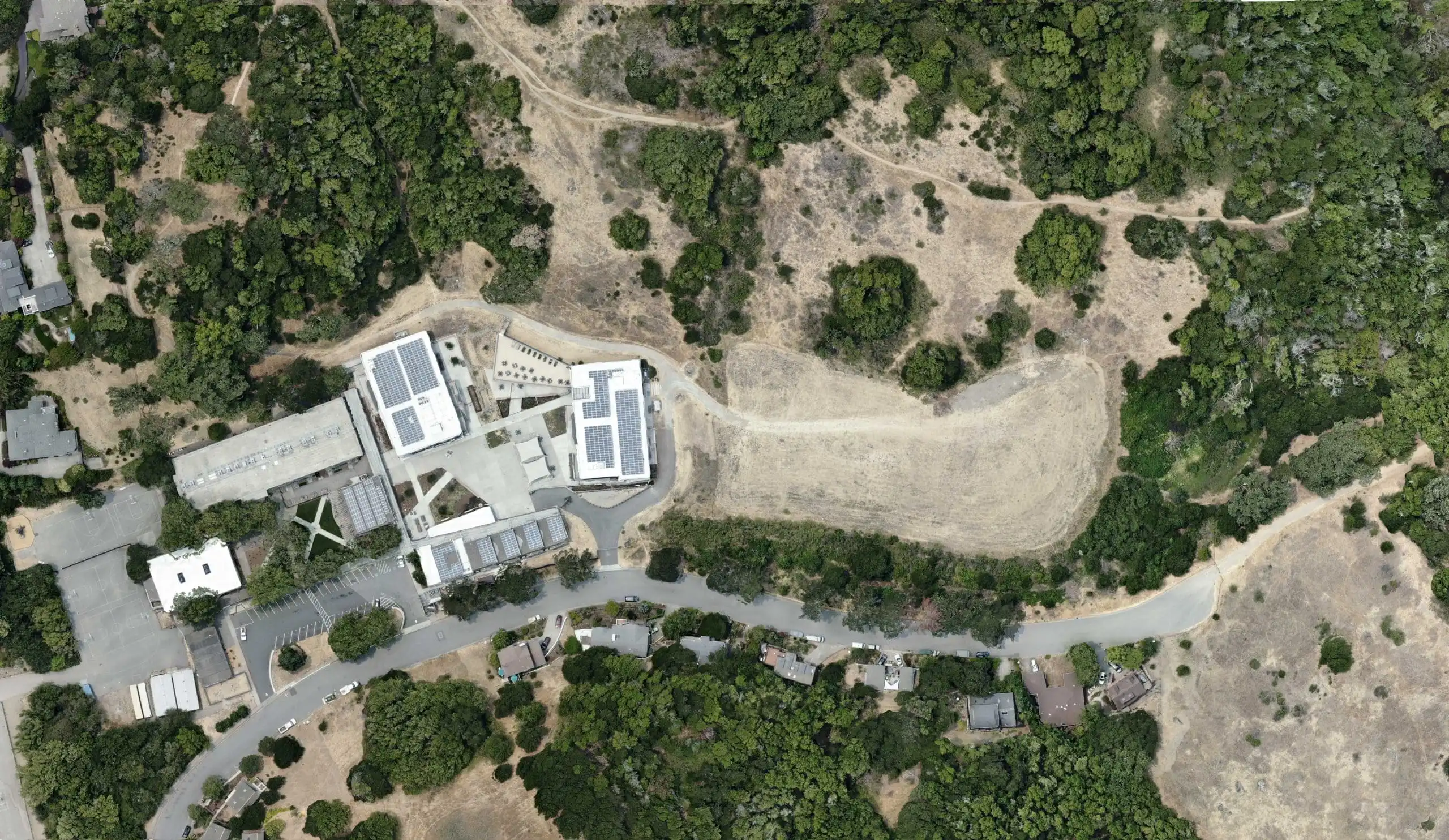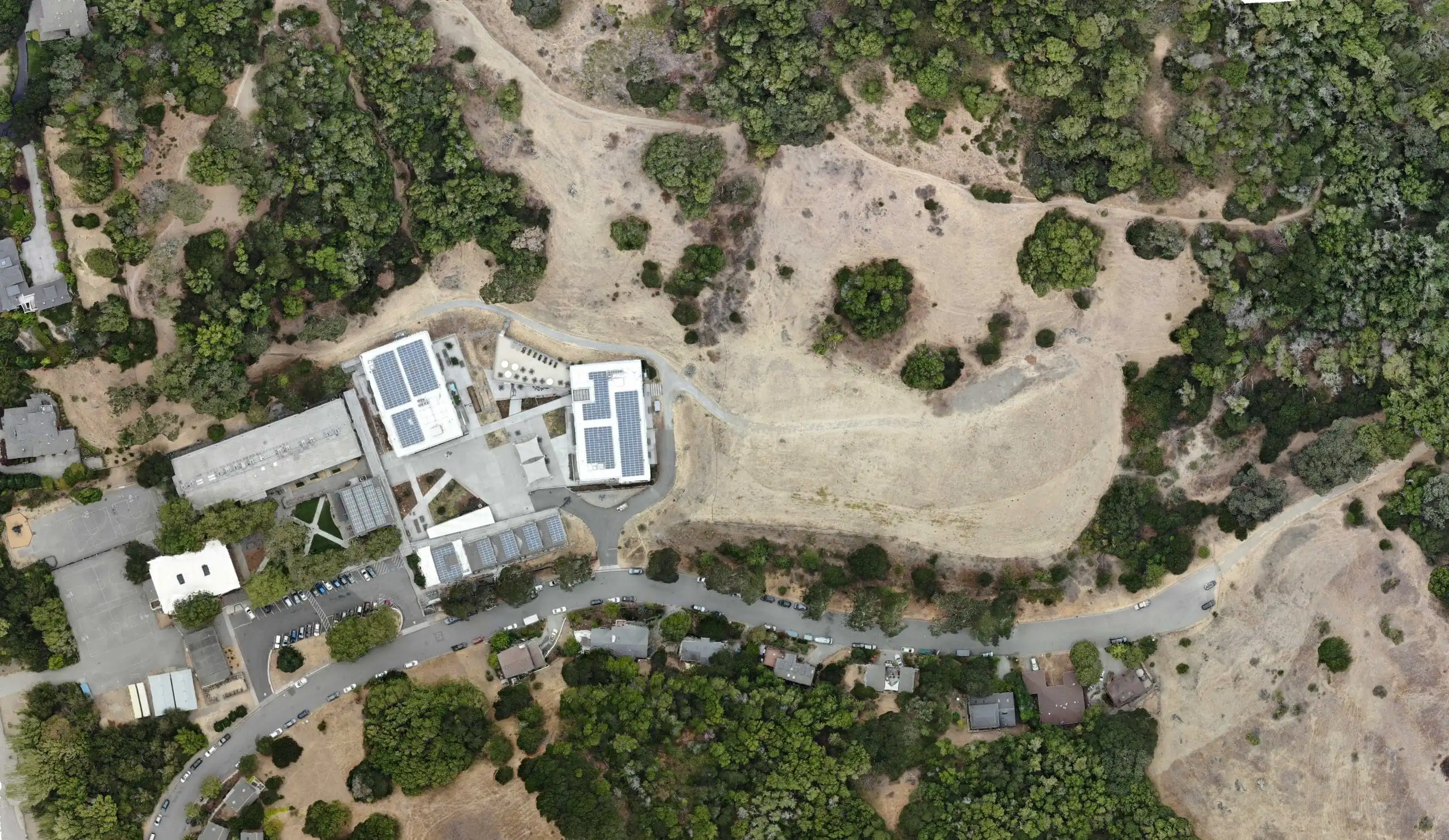If you’re a large landowner (10+ acres) goat grazing might be an effective tool to help you reduce wildfire hazards. Smaller residential properties are usually not cost-effective, due to the cost of transporting goats by truck. Fire Safe Marin offers a list of local goat grazing contractors. Another helpful resource is Match.Graze.
2018 was the first year for large scale goat grazing in the Ross Valley. The Sleepy Hollow Fire Protection District organized a consortium of large land owners including Marin County Open Space, San Domenico School, Triple C Ranch and Rocking H Ranch to create defensible space and shaded fuel breaks utilizing goats. Two herds of goats and sheep, totaling 800 head, worked in Sleepy Hollow, Terra Linda, and Lucas Valley in 2018 as part of a large-scale fire hazard reduction project This $171,900 project was a collaborative effort resulting from the Marin CWPP and 2016 SHFPD Wildfire Hazard and Wildland Urban Interface Area Assessment, which identified key locations for fuel reduction to reduce the impact of wildfires in Sleepy Hollow and neighboring communities. The multi-agency project reduced hazardous fuels on more than 200 acres of high-risk grass woodlands in central Marin.
Recognizing that goats offer a natural, economical, and sustainable solution to reducing vegetation fuel and wildfire hazards, in 2019 the Sleepy Hollow Fire Protection District and Fire Safe Marin helped bring 1200 goats to central Marin where they grazed more than 600 acres of high-risk grass woodlands, clearing 3+ acres a day of vegetation, including non-native, invasive plants. This approach proved cost-effective and gentle on the land, reducing the fuels for fire, restoring native grasslands where firefighters can more easily control fires, limiting greenhouse gas emissions, and creating pastoral fuel breaks in the open spaces between communities. In 2020 the project was again expanded to include more areas in Fairfax, San Anselmo and Central Marin. The 2021 program is similar in size and scope.










